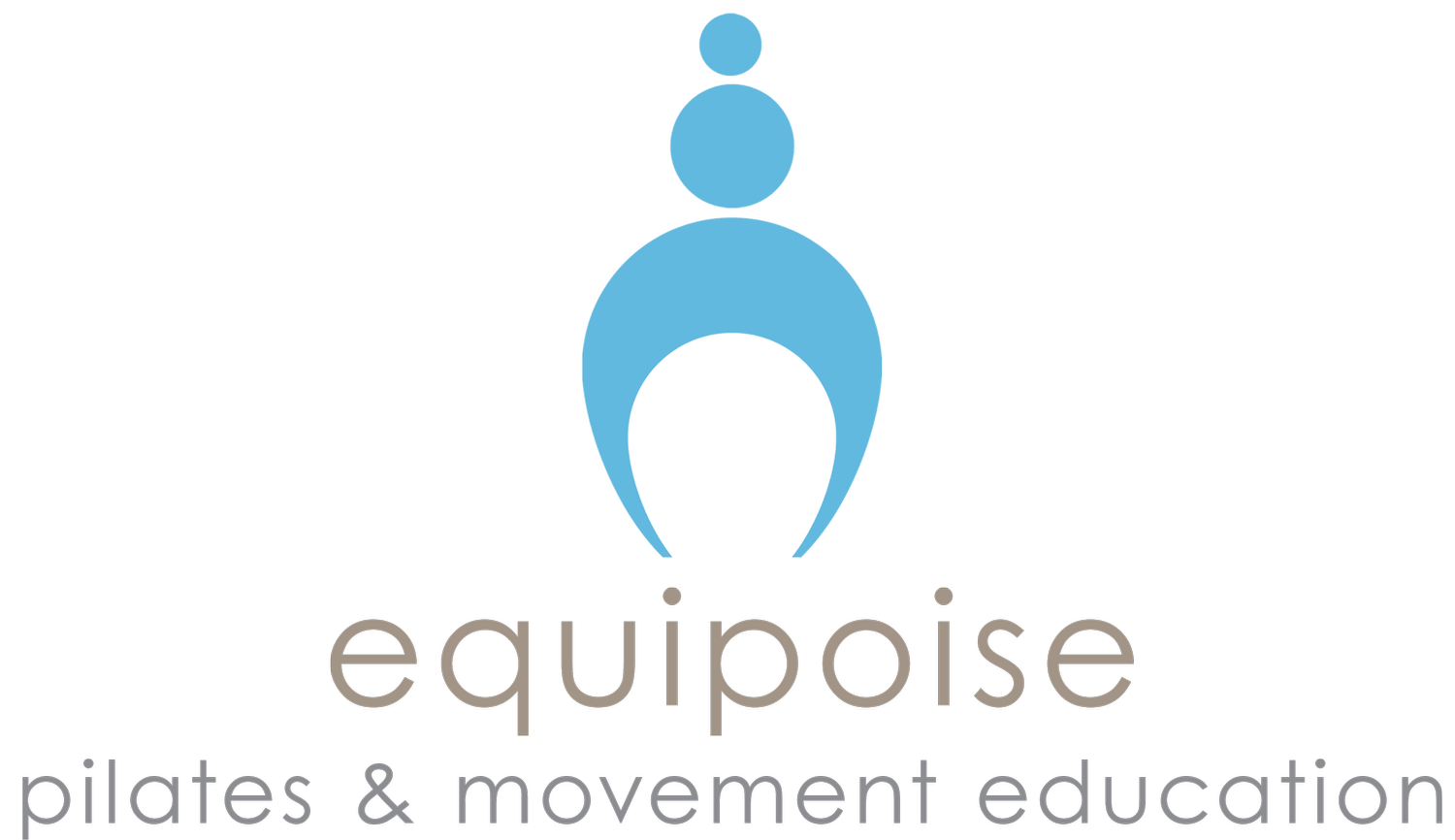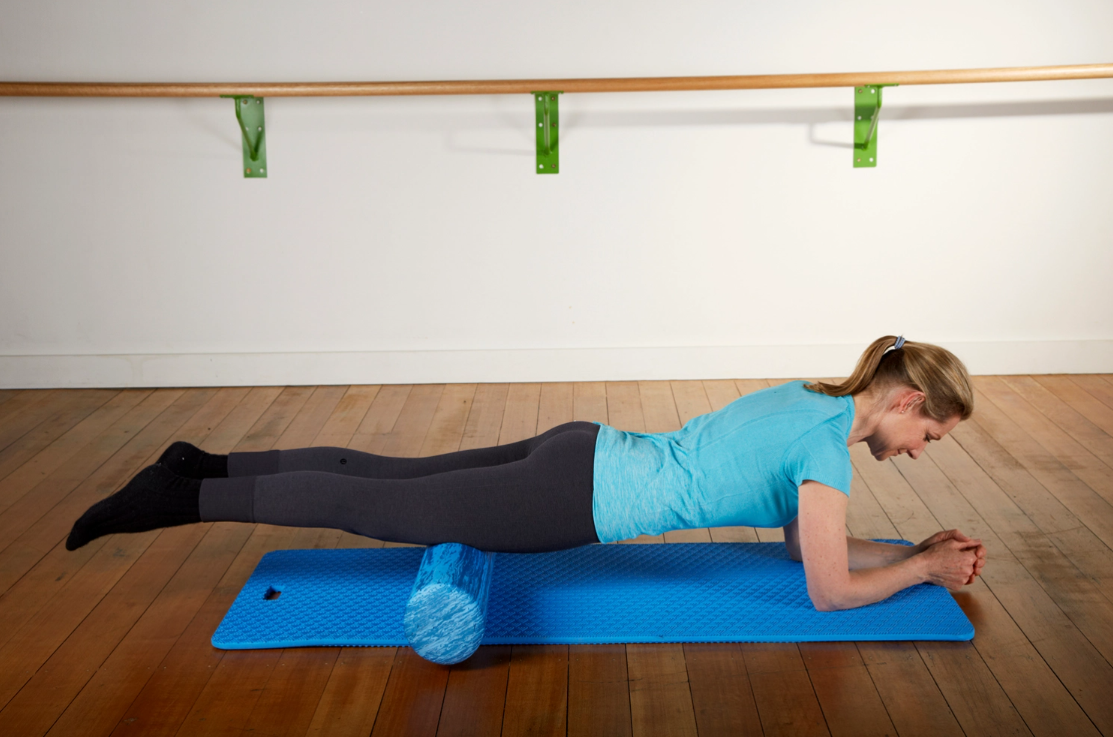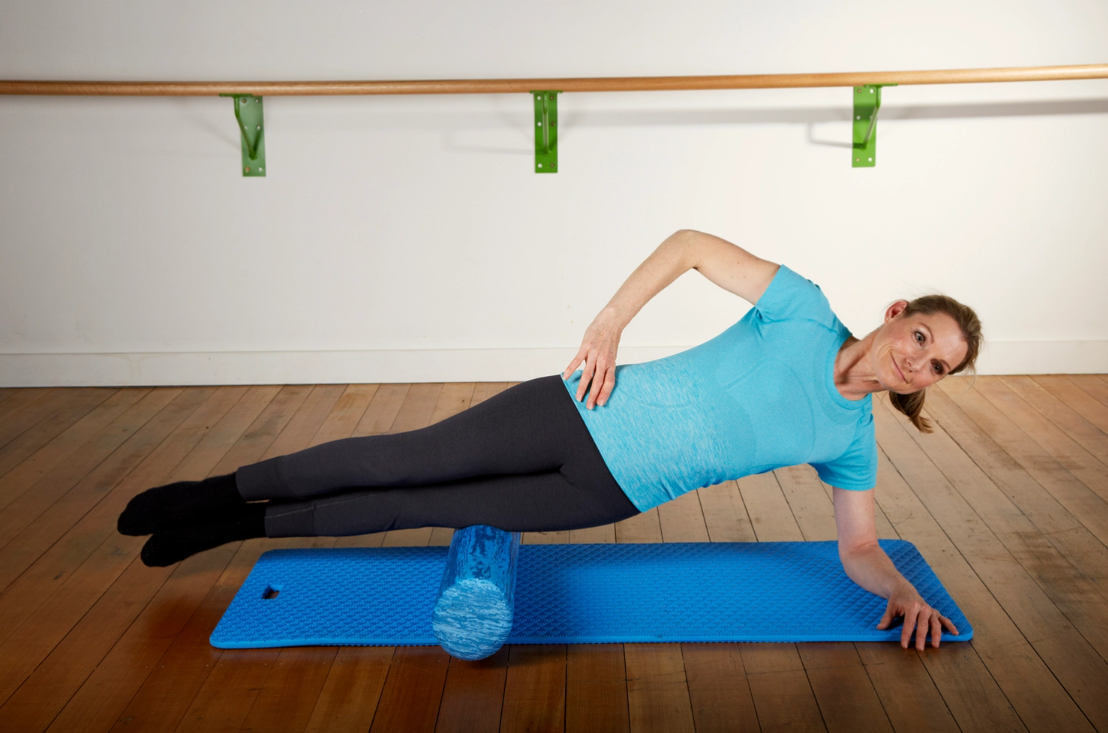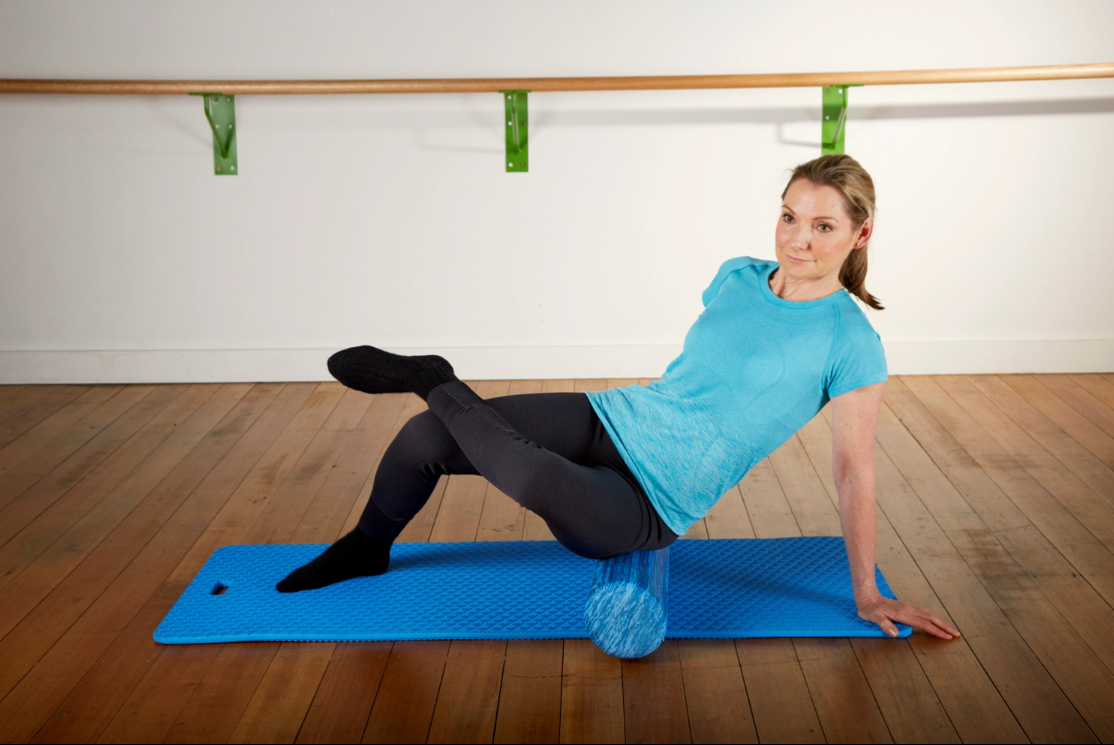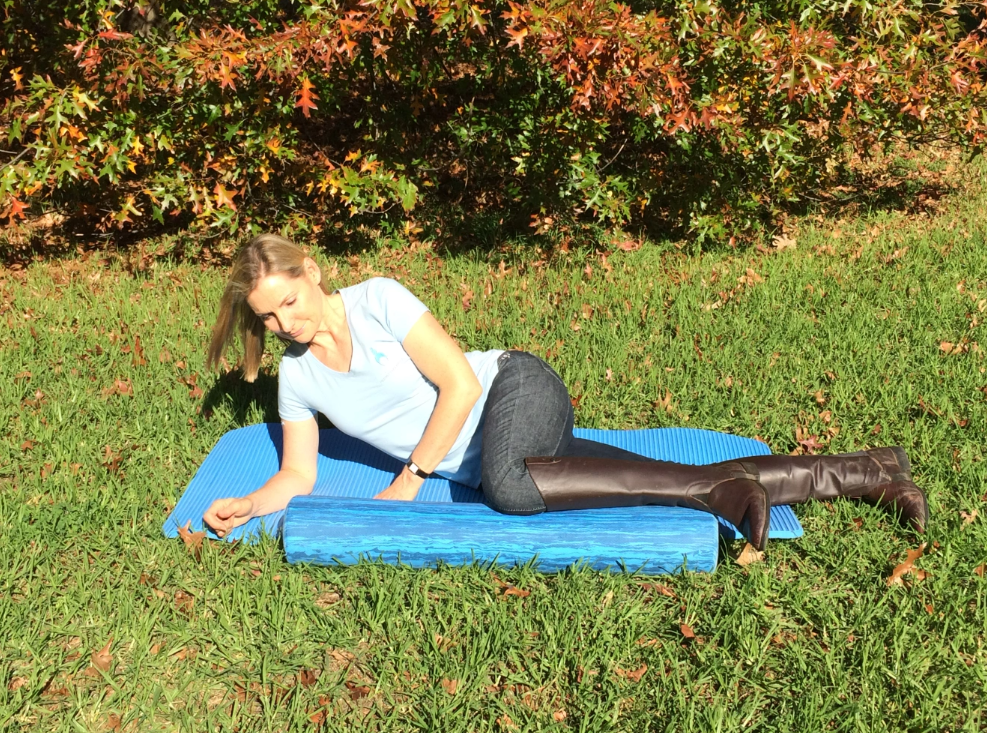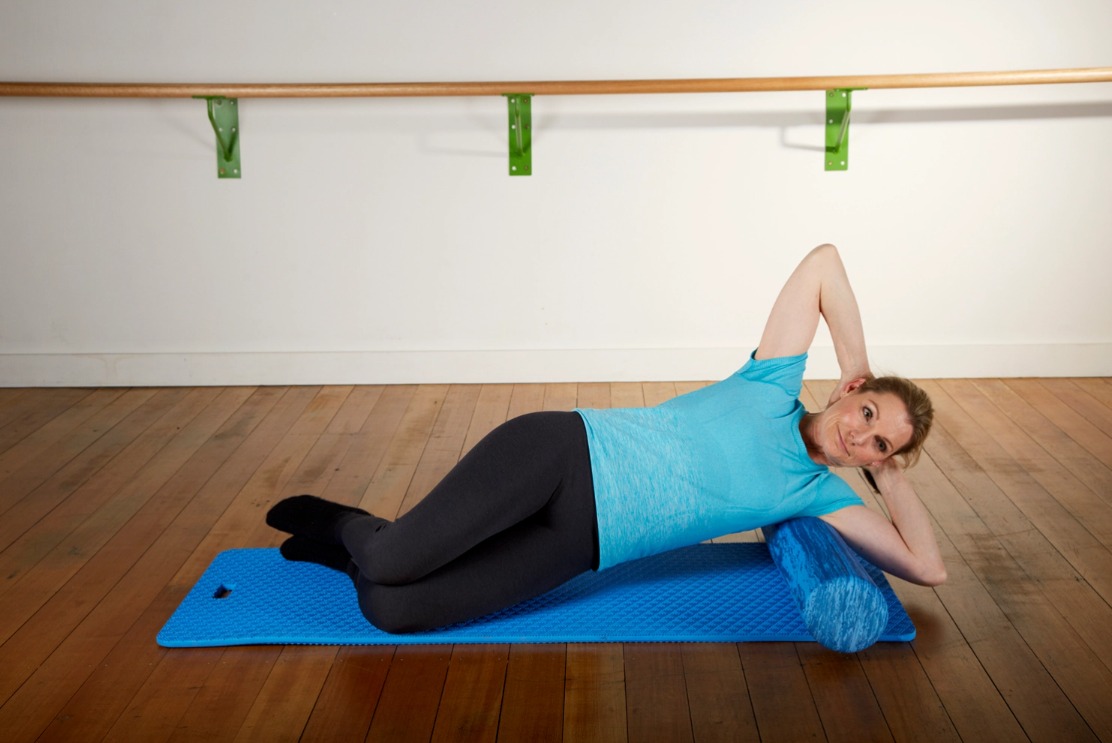Improve your suppleness and position in the saddle with self-Myofascial release.
Whether you are a competitor or a weekend pleasure rider using a foam roller for self-myofascial release can be an indispensable tool in keeping your body supple and pain free whilst increasing your riding pleasure and longevity. Suppleness, essentially, is the ability to absorb the impact of movement without tension. In her book ‘Rider and Horse Back to Back’ Author Susanne Von Dietz says “suppleness acts as a common denominator for a healthy back for both horse and rider”. In Pilates we talk a lot about stability and core strength and control, but there is also a very important mobilising component to the work and I believe one of the most effective and convenient ways to prepare for riding or a Pilates class and help with recovery afterwards is through foam roller self-myofascial release. If you haven’t used a foam roller before or have used one only occasionally it can be uncomfortable, if not painful, and no amount of encouragement from your Pilates teacher or trainer is particularly convincing in increasing your enthusiasm. Perhaps current research can convince you that the foam roller may well become you and your horses best friend as it mobilises joints, increases flexibility, contributes to anti-ageing and improves your suppleness and position in the saddle!
According to Dr Robert Schleip, Director of the Fascia Research Project in Ulm University in Germany, 3 systematic reviews in the areas of research on the benefits of self -myofascial release (SMR) using a foam roller has shown that it is an effective treatment method to increase the metabolism, circulation, flexibility (at least in the short term) and joint range of motion (joint range of motion equals suppleness in the saddle), without disadvantaging muscle performance or strength, even if you do it directly before exercise. (We know that static stretching before an athletic performance can compromise performance results). The research has also shown that recovery after exercise or sport is enhanced by the foam roller.
So what is myofascial release? Myo(muscle) Fascia(to connect). Myofascial release is the release of fascia. Fascia is connective tissue, it consists of cells, fibres and water, the amount of water depends on the location of the fascia, but generally it is 2/3rds water. A fibro elastic net, fascia comes in all forms from superficial to deep. It is elastic and springlike, it is a force transmitter and a whole body tensional network, it has the energy capacity of stainless steel, and it envelops all muscles and organs throughout the body. It is now believed we need to think of our bodies as a neuro-myofascial web, the muscles are embedded in fascia in chains, rather than thinking of individual muscles or muscle groups, this helps explain why a restriction in one part of the body can affect another part of the body further along the chain. Structurally fascia is important, but functionally also, the webbing of the fascia can twist and ‘plate down’, it dehydrates and captures nerves and blood vessels, the pressure on the dehydrated plate sends stimulus to the nerves and causes pain. Myofascial restrictions are said to be brought on by injuries, muscle imbalances, over recruitment (the over use of certain muscles), and/or inflammation, all of which can decrease joint mobility and the overall healthy performance of our bodies, whether in the Pilates Studio, riding, playing sports or everyday life.
Interestingly well hydrated fascia also keeps ageing at bay, when we are born we are approximately 90% water, an adult is approximately 67-72% water and this slowly declines as we age ageing fascia is drier, it then begins to fray and stiffen. It is the loss of elasticity of the fascia in the Iris of the eye that contributes to the decline of our sight, and fine lines and wrinkles develop as the result of the breakdown of fascia within the skin. So how do we hydrate the fascia to reap all these wonderful benefits? Just drinking water will not help, how do we get the water out into the fascial system? Self-myofascial release and Pilates! Varied movement is essential, our bodies are designed to move and unless you vary your movement you will be hydrating the same fascial areas. A lot of riders spend most of their recreational time in the saddle, in the same position, our bodies become what we repeatedly do, and the fascial system plays a role in this, therefore cross-training becomes very important. A well designed Pilates class whether at home on the mat or in a studio is perfect!
So, put simply, the foam roller is a valuable addition to an equestrians active lifestyle, a great tool to release and restore suppleness to our tissue through fascial release, and the perfect way to begin or finish a ride.
Instructions from bottom left moving clockwise – By doing 6-10 repetitions of each this sequence will take 10-15 minutes and is easy to build into your daily routine.
Lie on your side with the roller underneath your arm, support your head in your hands, connect to your core and lift your hips. Roll slowly across the back of the armpit, here you will be restoring motion to the shoulder and shoulder blades. Lower the hips, straighten both legs and come onto the elbow. Now for the Adductors, place the roller lengthways in front of your body, the top level with your chest. Place your bent top leg on the roller just above the knee. Roll yourself out using your arms for support as the roller goes high up into the inside thigh then slowly roll back to just above the knee. Tightness here can inhibit the gliding of the hip joint, riders need to release any tight structures to maximise the range of this ball and socket joint as it is more favoured to forward movement and has a limited range of motion to the side. From there come onto your elbows and place the roller just below the hips, connect to your core to support your lower back and slowly roll down your Quadriceps to just above the knees, returning to just below the hips. Transition to the next by rolling onto the side of your hips, supporting yourself on one elbow, with the roller just below the hip bone and roll the Iliotibial band to just above the knee. From here you move onto the Piriformis/Gluteals. Sit on the roller, with feet flat on the floor, sit slightly to one side, pick up the same side ankle and cross it over the opposite knee, roll slowly across the outside of the hips. A tight Piriformis can affect the position of the legs in the saddle. Now place the roller at the base of your shoulder blades, support your head in your hands and lift your hips. Roll from the start position to the lower ribcage, enjoy this beautiful upper back massage but don’t go too low here, the pressure can be uncomfortable on the floating ribs.
Here are three tips to enhance your foam rolling technique for better results –
Roll SLOWLY, this is essential, it allows for Thixotropy to occur, changing the tissue from a gel like state to a fluid state.
If you are rolling a limb, finish a the top in accord with the flow of lymph.
Persevere if it is painful and change limbs more frequently, being mindful to keep breathing throughout.
